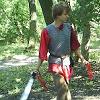
VI. TEMOFESZT - MLVK LEGO Layout - Discussion
By
Ashi Valkoinen, in LEGO Train Tech
-
Recently Browsing 0 members
No registered users viewing this page.

By
Ashi Valkoinen, in LEGO Train Tech
No registered users viewing this page.